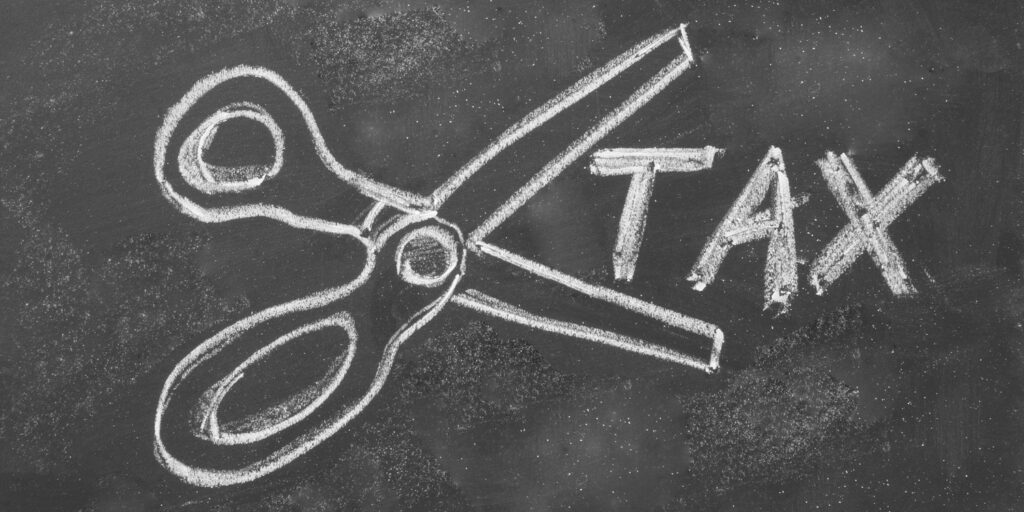Whether or not you are familiar with Self Assessment payments on account, we are sure you would like to know how to reduce them. However, before we explain how to reduce your payments on account, let’s discuss why you are being asked to pay them.
What are Self Assessment payments on account?
Self Assessment payments on account are a UK tax obligation that kicks in when your tax bill for any given tax year is over £1,000. This applies to sole traders, partners, and most directors of limited companies.
Each Self Assessment payment on account is an upfront payment towards next year’s tax bill, payable on two dates each year: 31 January and 31 July. Each payment equates to 50% of next year’s estimated tax bill, based on your last tax return.
We often do not pay attention to the January payment on account, as it generally gets hidden in the total Self Assessment payment on 31 January. However, it does help explain why the January bill can be financially painful, especially the first time we are asked to make a payment on account.
Why does HMRC make me pay in advance?
HMRC makes the assumption that your next tax return will be similar to the one you have just filed. Equally, they assume that making these two Self Assessment payments on account will help you spread the cost of your tax bill. Their aim is to reduce the financial stress of trying to find the money for a large tax bill in January of each year.
This spreading of payments can be helpful, especially for businesses with a steady stream of revenue, or directors who receive regular dividends.
It is less helpful for businesses that are seasonal, or for directors whose dividends are erratic. However, you can request to reduce payments on account, but only if there is a downturn in profits or taxable income.
What if my tax bill for the coming year will be less than this year?
If your sole trader profits or dividends are reduced, and you estimate your tax bill will be lower, you can apply to reduce your Self Assessment payment on account. You can either do this when you submit your tax return or at a later date.
To reduce your Self Assessment payment on account at the time of submitting your tax return, you can ask your accountant to make the request. Or, if you do your own tax return, look out for the question near the end of the tax return form about whether you want to reduce your payments on account. You will have to justify this by explaining to HMRC why you are making such a request.
To ensure your request is reasonable, please see the example below. If you make a request to reduce payments on account falsely, HMRC may charge you interest on the underpaid amount – i.e. the difference between what they estimated and what you declared.
How to reduce Self Assessment payments on account
If you plan to do this yourself, you should read through the example below to ensure you have calculated the reduction correctly.
Alternatively, tell your accountant what your current earnings are looking like for the current tax year (which is what the payments on account are based on) and they will make the request for you.
If you make an unreasonable request to reduce your payments on account, HMRC could refuse. However, it is more likely they will accept your declaration.
Step-by-step instructions
Once you have worked out what your tax bill is likely to be, and know how much you can reduce your payment on account (see example below), you can then:
- Log into your HMRC services online account using your Government Gateway user ID
- Scroll down to the Self Assessment box on the homepage
- Select ‘Amend Self Assessment Return’
- Select ‘Tax Return Options’ from the top right-hand menu
- Select ‘Reduce payments on account’ from the top right-hand menu
- Enter the amount you are willing to pay
- Tick the box next to the reason that closely explains why you’re making the request
Example: How a payment on account is calculated and when it can be reduced
Jack’s business has been growing steadily since he started trading, and he has recently been able to take out dividends. When he filed his 2023/2024 tax return in January 2025, he was asked to pay £1,500 for the tax return he was filing. He was also asked to make two £750 payments on account, as this was the first time his tax liability was above £1,000.
To summarise, he was asked to pay £2,250 by 31 January 2025 (£1,500 for his 2023/2024 tax bill plus a £750 payment on account for his estimated 2024/2025 tax bill). He was also notified that he would be asked to pay a further £750 by 31 July 2025 (the second payment on account).
If Jack’s tax return for 2024/2025 is the same as his 2023/2024 tax return, Jack will be all paid up for his 2024/2025 tax liability by 31 July 2025 and have nothing due in January 2026. However, he will be asked to continue paying the two payments on account each January and July, assuming his annual income remains roughly the same. Therefore, Jack’s tax bill will be approximately £750 every January and July (much better than the initial £2,250).
- How to register for Self Assessment
- The top 10 Self Assessment tax return mistakes – and how to avoid them
- How to reduce your Self Assessment payments on account
- 12 Self Assessment expenses you didn’t know you could claim
However, if Jack’s profits are down in the year 2024/2025 and he is unable to take out the same amount in dividends, his tax liability will be less. If we assume his tax bill for 2024/2025 works out at £800 (as opposed to the £1,500 estimated by HMRC based on the previous year), he will want to reduce his second payment on account.
As he has already paid £750 in advance in January, he is only due to pay £50 by 31 July to 2025 to fulfil his tax obligation for 2024/2025. Jack will have to make a request to HMRC to reduce this payment on account, otherwise HMRC will expect the full £750 and charge interest on any underpayment (until they are informed of the updated estimate). However, if Jack did pay the £750, he could request a refund for the overpayment, but it would be kinder to Jack’s cash flow if he did not overpay in the first instance.
Furthermore, because Jack’s annual tax bill has dropped below £1,000, he will no longer have to make a payment on account until his annual tax liability rises above £1,000 again. Therefore, he pays £50 to cover the balance now and nothing more is due until January 2027 – the deadline for filing his 2025/2026 tax return and paying his bill for that tax year.
What if I cannot afford to pay my tax bill?
If you cannot afford to pay your Self Assessment tax bill for any legitimate reason, you can request a payment plan.
How to request a payment plan BEFORE you are due to pay a payment on account
- Log into your online account using your Government Gateway user ID
- Scroll down to the Self Assessment box on the homepage
- Select ‘Set up a payment plan’
- Then answer each question as you are asked, to request a payment plan
How to request a payment plan AFTER you are due to pay a payment on account
Call HMRC using the Self Assessment Payment Helpline on 0300 200 3822 between the hours of 8am to 6pm, Monday to Friday.
You will need your UTR (Unique Tax Reference) number, and you will need to be prepared to inform them what you can afford to pay.
Please note that the information provided in this article is for general informational purposes only and does not constitute legal, tax, or professional advice. While our aim is that the content is accurate and up to date, it should not be relied upon as a substitute for tailored advice from qualified professionals. We strongly recommend that you seek independent legal and tax advice specific to your circumstances before acting on any information contained in this article. We accept no responsibility or liability for any loss or damage that may result from your reliance on the information provided in this article. Use of the information contained in this article is entirely at your own risk.






Join The Discussion